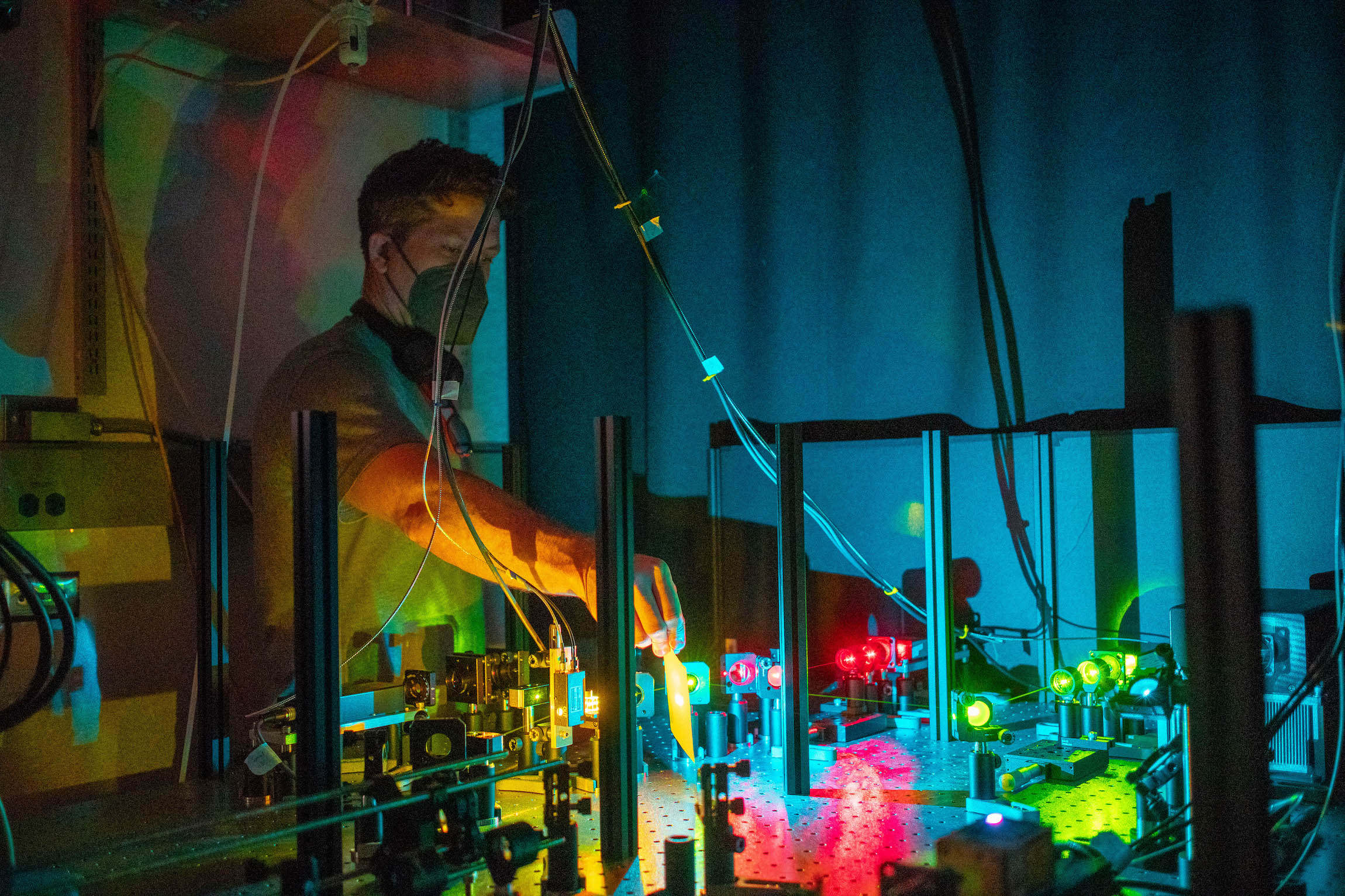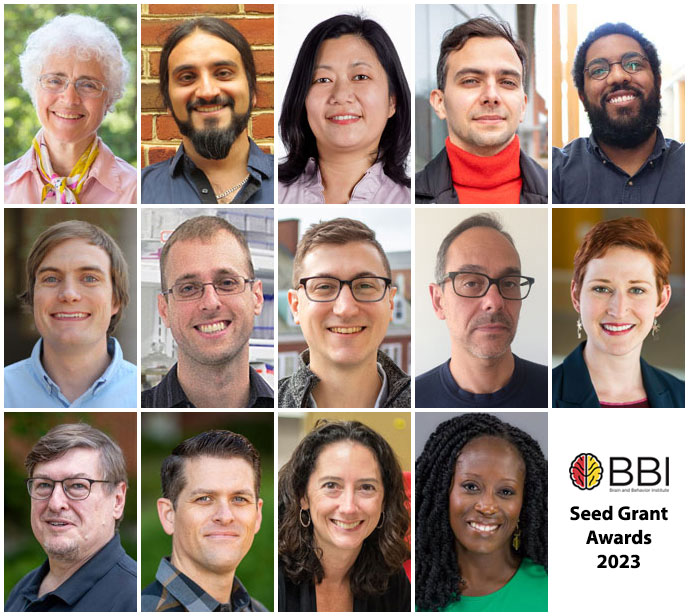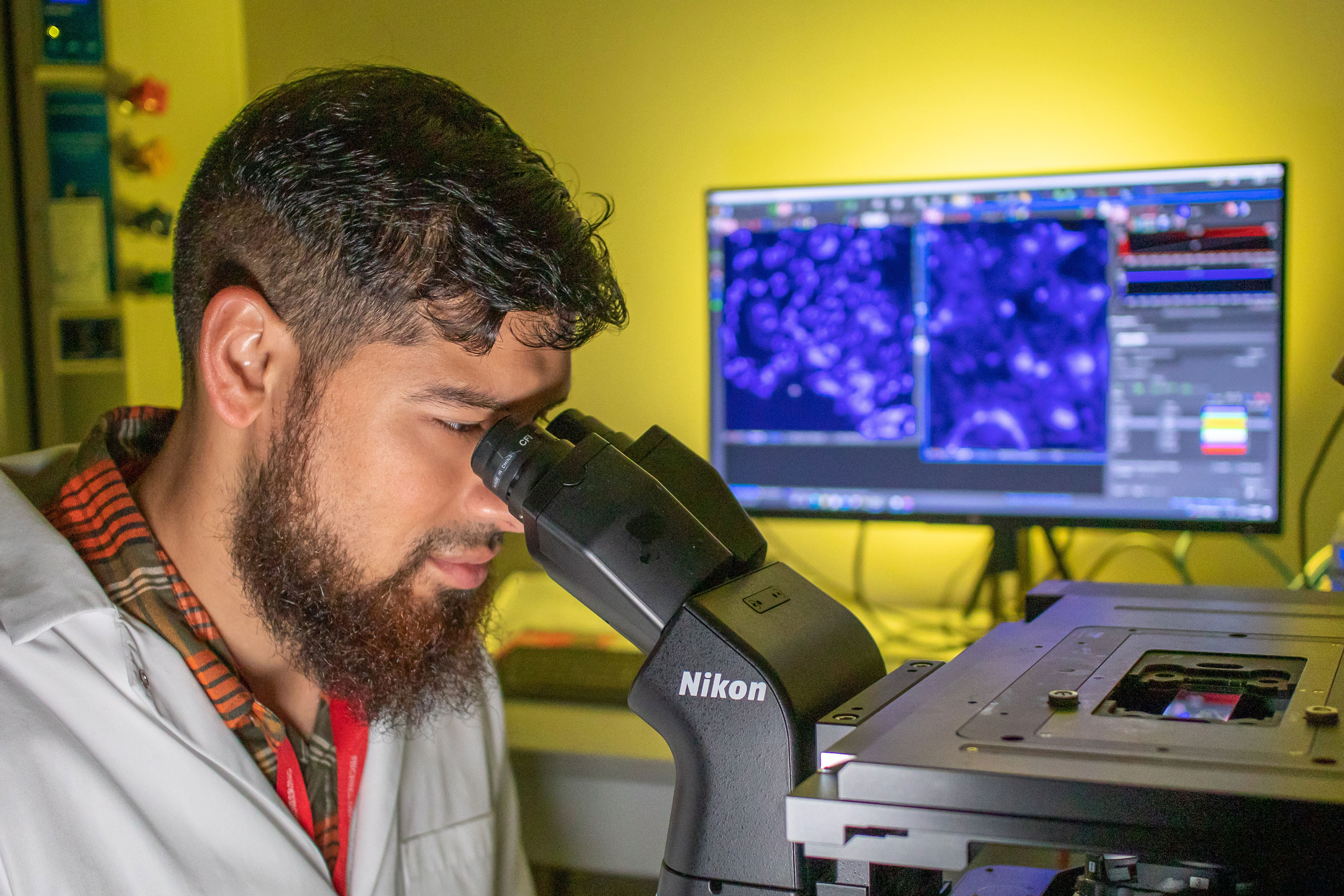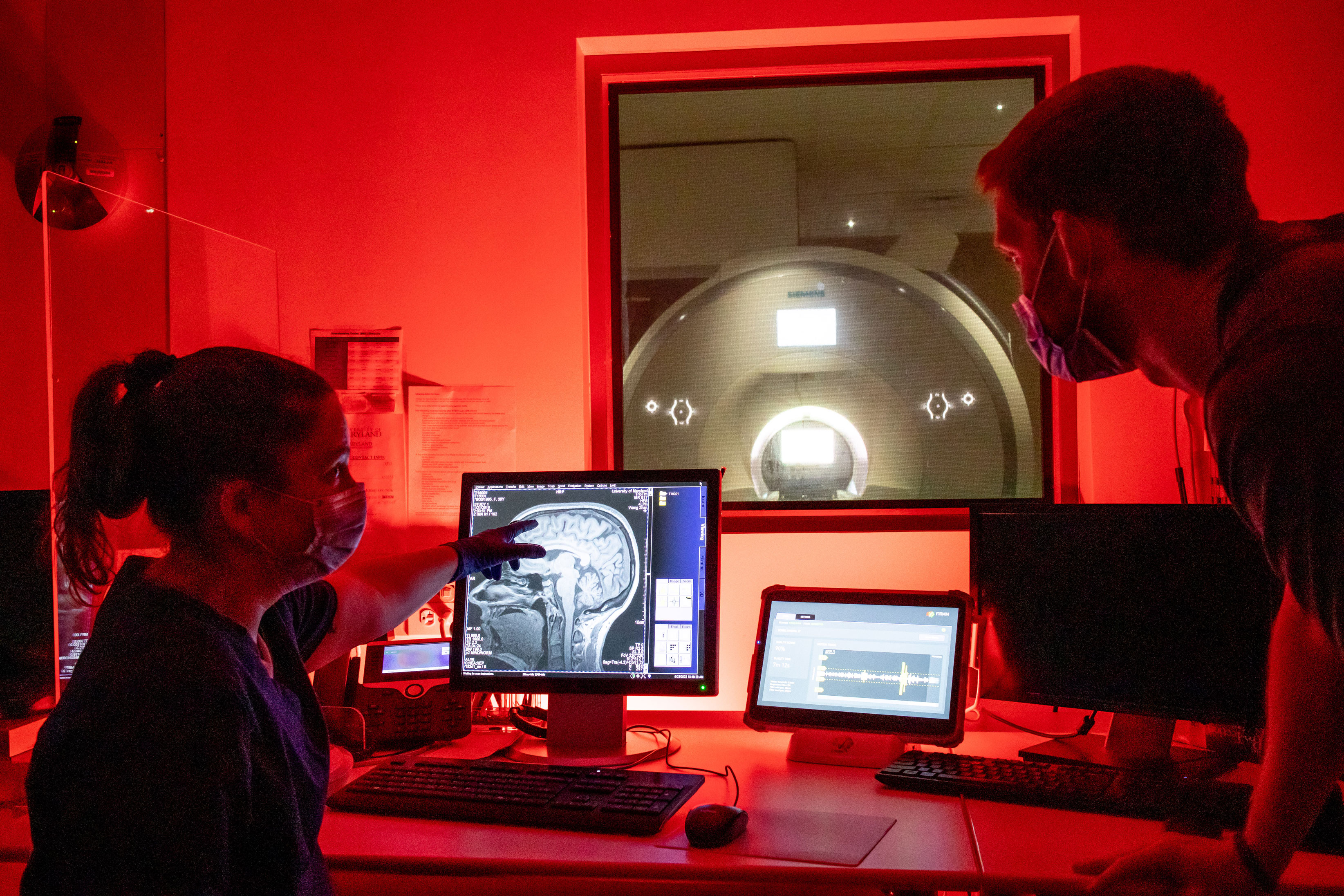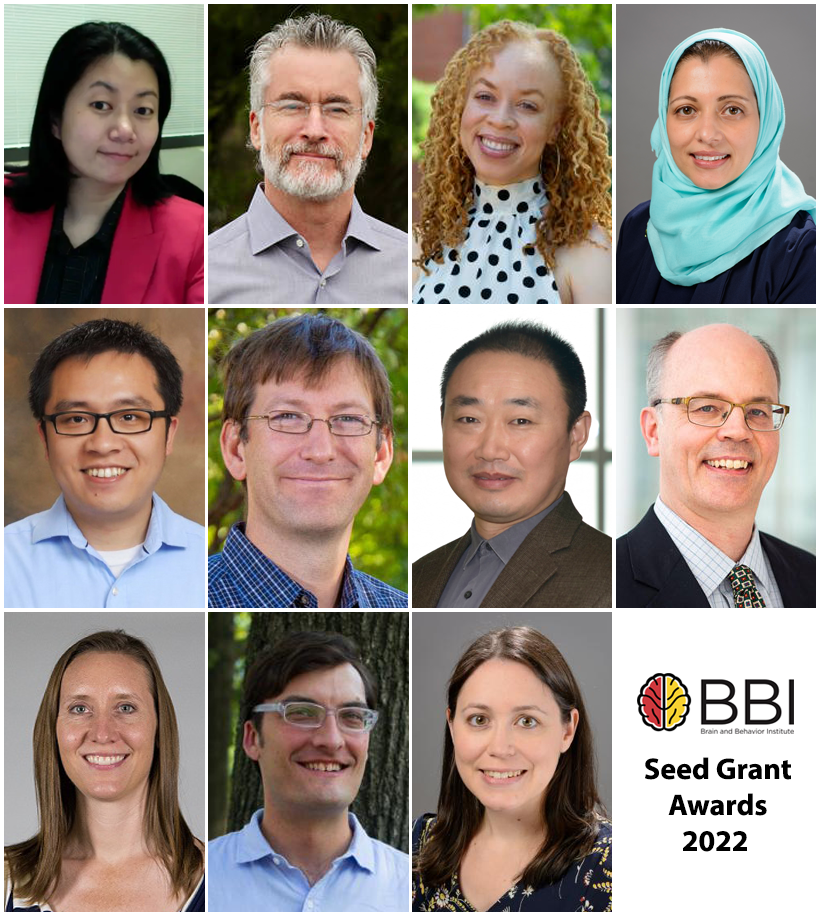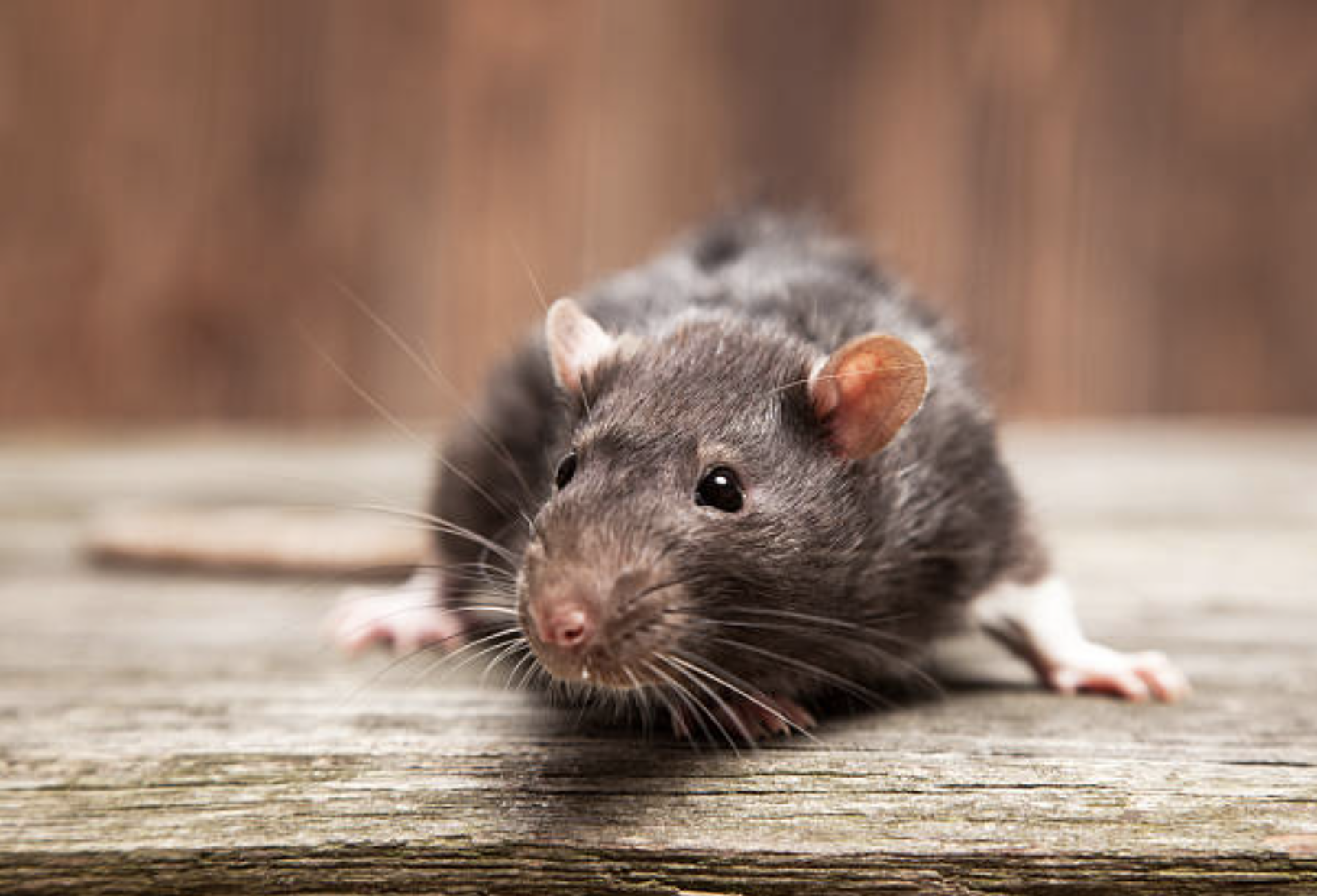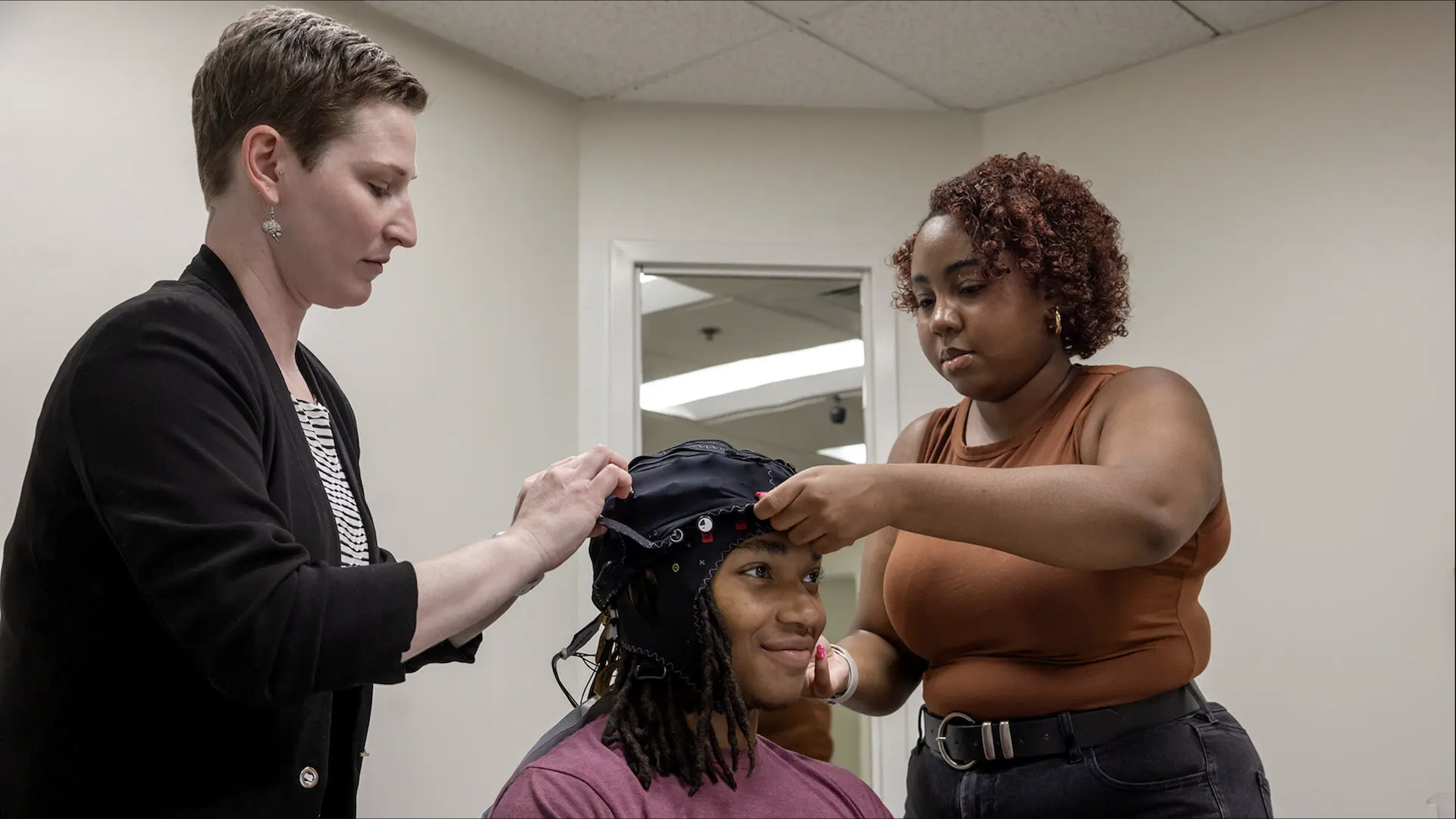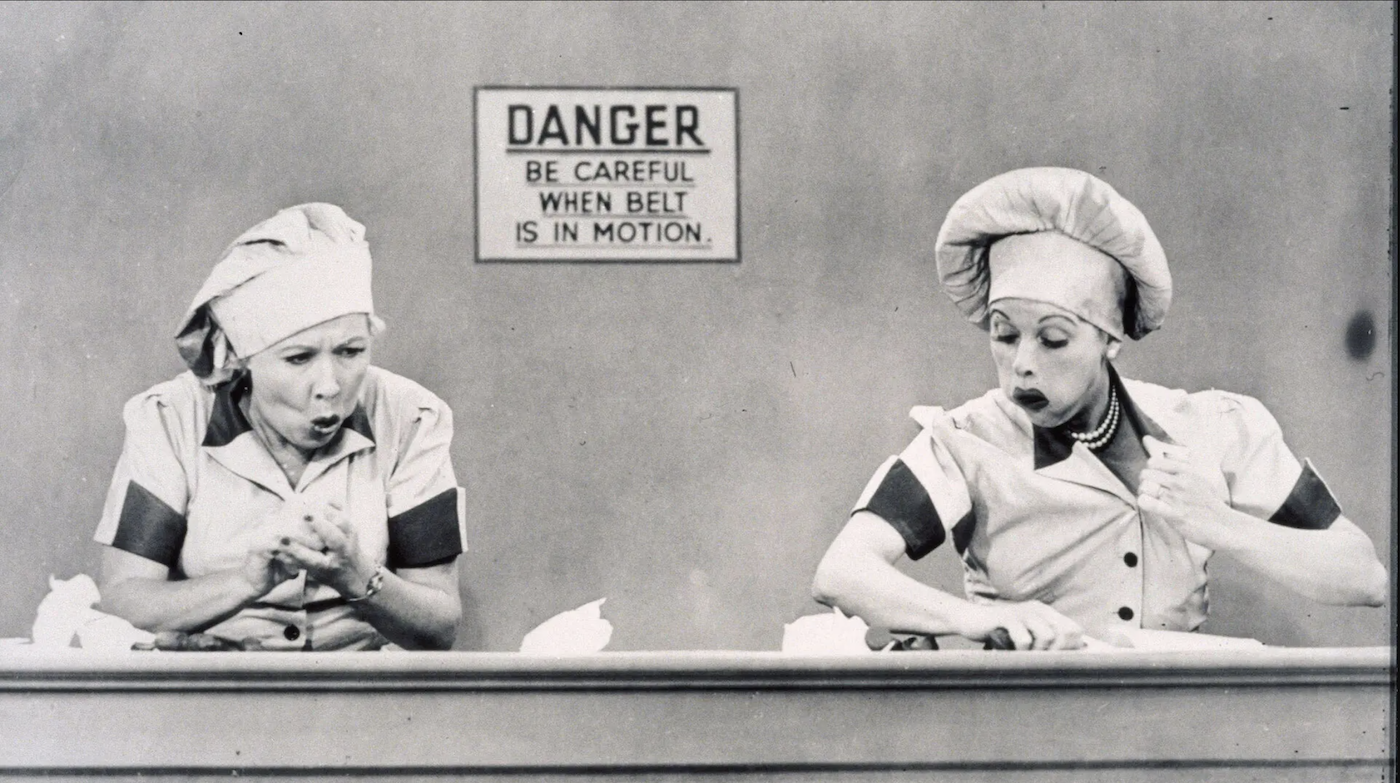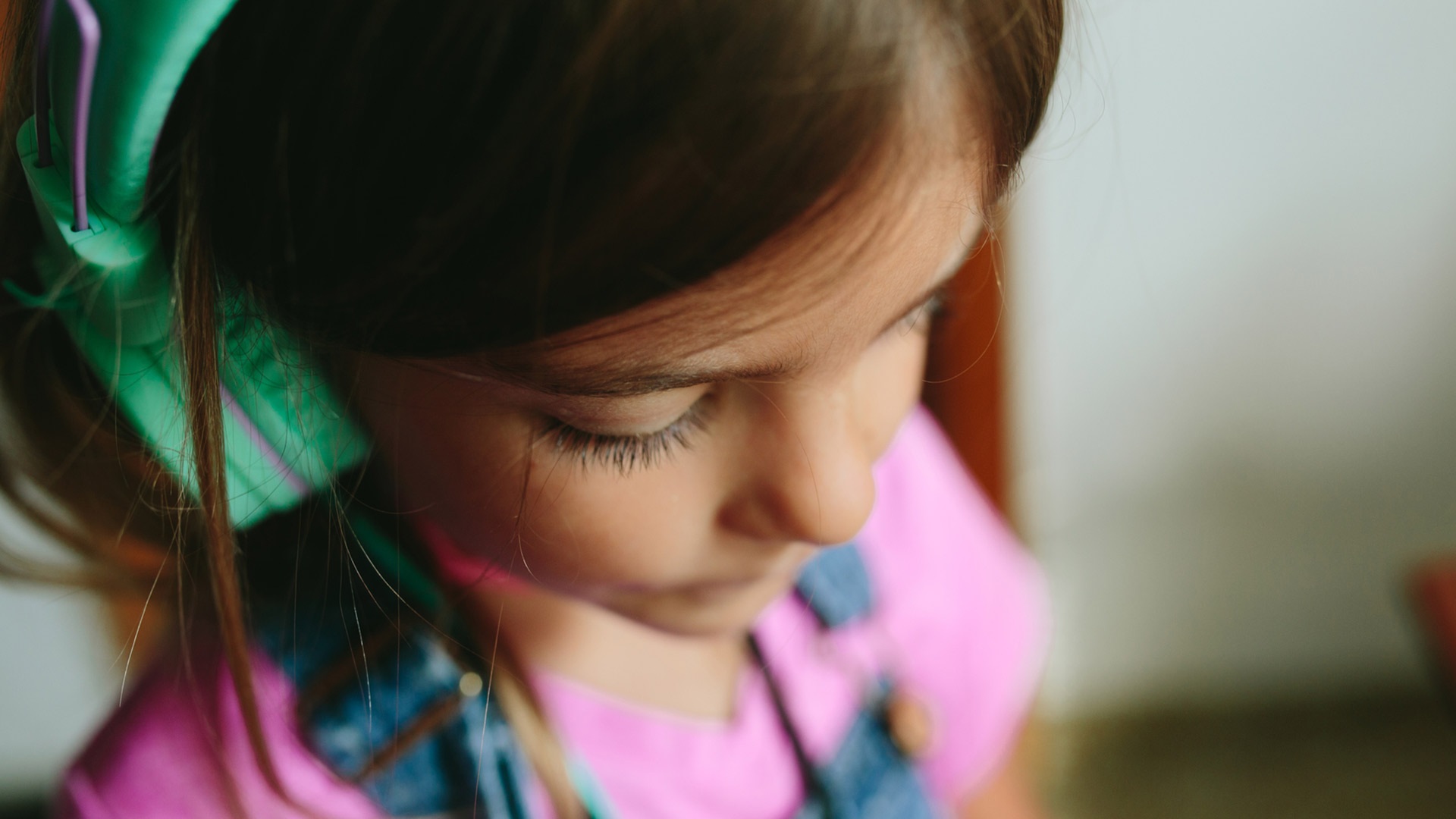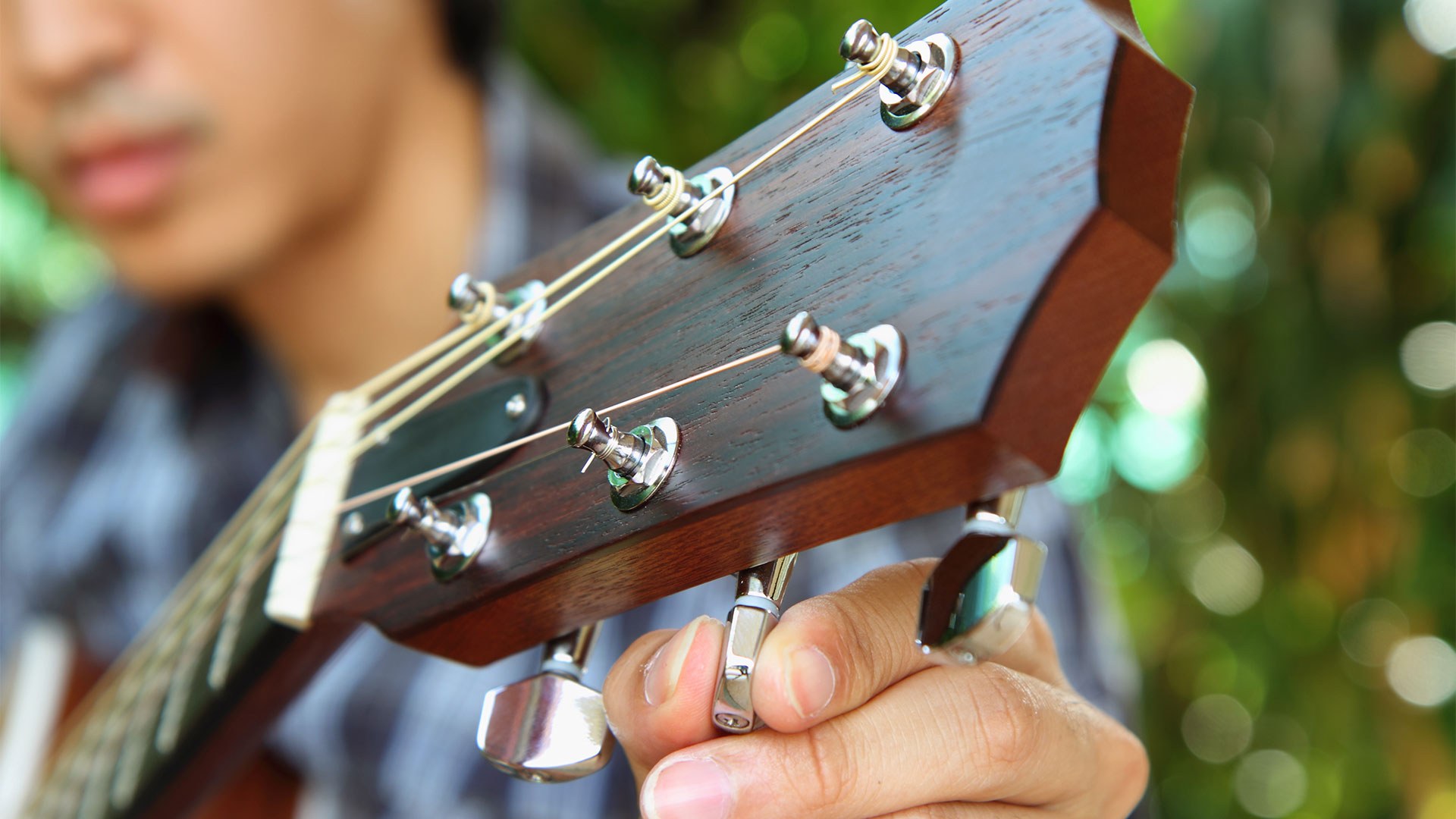News Story
Reflections on a Career Making Biologically Relevant Compounds
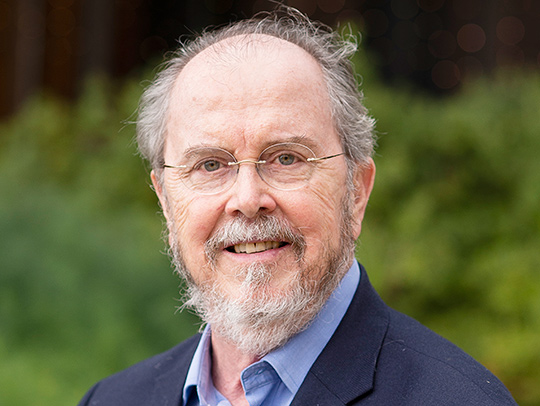
Professor Philip DeShong has spent 45 years making biologically useful products. As a synthetic chemist in the University of Maryland’s Department of Chemistry and Biochemistry, DeShong has synthesized anti-cancer compounds and antibiotics and made fluorescent molecules for biological research.
In the early 2000s, he and Professor Daniel Stein in UMD’s Department of Cell Biology and Molecular Genetics discovered a relatively simple combination of compounds that produced soap bubble-like vesicles that could be used to deliver imaging dyes, medications and vaccines into the body.
That discovery led DeShong and Stein to launch SD Nanosciences in 2007 to commercialize the vesicle technology for medical applications such a vaccine formulation and targeted drug delivery. DeShong has also partnered with his UMD colleagues and pharmaceutical companies to advance a broad range of applications for the vesicle technology.
In 2016, DeShong was part of a team awarded a Brain and Behavior Institute seed grant for "A novel use of catanioinic vesicles to modulate nervous system function and behavior."
We spoke with DeShong, who began his career at UMD in 1986 and plans to retire in January 2022, about his research and his time at UMD.
Why did you choose to go into synthetic chemistry?
Synthetic chemistry is very creative. Synthetic chemists are considered the artists among the group. I was always attracted to the creative part and making molecules that have a real-life purpose. Once I learned how to make things, I learned how to make things that were biologically relevant. Through those experiences, I realized I wasn’t interested in doing hardcore biology, but I was very interested in working with biologists.
What kinds of products have you developed with biologists?
Over the last 15 years or so, I've been interested in methods of making more complex entities, such as assemblages of molecules for use as drug delivery systems or vaccines. It’s sort of like making artificial cells that you put in the body to deliver things, such as a drug or a protein in the case of a vaccine. Now, we’re doing all kinds of things to make interesting assemblages that generate biologically relevant responses.
For example, with Ian White in UMD’s Fischell Department of Bioengineering, we have synthesized complex molecules that allow his sensors to detect drug-resistant bacteria. In another instance, my group prepared fluorescently labelled molecules that allowed Bob Dooling in UMD’s Department of Psychology to image specific targets in the brain. Also, my lab has relationships with commercial entities to develop different products. Through the university, we have a large-scale animal trial to test a product for poultry. This is a particularly exciting project because it is the first large-scale trial of our technology in animals.
How did your company SD Nanosciences come about?
Dan Stein and I worked together for many years before we started SD Nanosciences. He was very interested in sexually transmitted bacterial infections like gonorrhea and related diseases. I was interested in vaccine development. Vaccines for bacterial infections are quite rare. Your body doesn’t usually create a long-term immune response to bacteria, so most vaccines are against viral infections.
We were experimenting with the vesicle technology to make these interesting assemblages that looked like cells. Then we figured out how to make the vesicles look like bacteria by decorating the outer surface of the vesicle with components found on the outer surface of bacteria, and we thought if we could trick the immune system into developing a response to these decorated vesicles, there would be a lot of potential for interesting vaccines against a variety of bacterial diseases and infections. Gonorrhea is a classic one, but also cholera, salmonella, and a wide variety of bacterial pathogens. So, Dan and I founded a company to commercialize the technology. Subsequently, we proved that the vesicle technology is viable, and that the vaccines worked in mice.
This method you developed is often described as using soap bubbles—can you explain why?
The proper term is catanionic vesicles, but it’s easier to think of them as soap bubbles. Like with making soap bubbles, you mix two things together and you get these balloon-like films that separate the water on the inside of the vesicle from the water on the outside of the vesicle. Stuff can’t pass through the film in either direction. You can put ink—think of a fluorescent dye—inside these bubbles and put them into something like an animal brain. The ink won’t leak out of the bubbles. The vesicle will circulate in the bloodstream until it finds a cell to combine with and then the ink is released. The secret is to decorate the outside of the vesicle so that it does not bind to just any cell but goes to a specific cell before releasing the ink or fluorescent dye When you accomplish that selective uptake the process is really useful for medical imaging.
What is the potential for this method to deliver a vaccine for a virus like COVID-19?
One of the things we can do with our system is deliver messenger RNA (the active ingredient in Pfizer and Moderna COVID vaccines). So, in principle we should be able to formulate a COVID vaccine if we can incorporate messenger RNA into these vesicles and deliver them to the appropriate cellular target. And there are many advantages of our system. For one, it’s very simple to manufacture, whereas current COVID vaccines require a very exotic process. In principle, our process could cut manufacturing costs by 75%.
Another of the practical advantages the vesicle technology has over existing COVID vaccines is that it should be stable at room temperature for long periods of time. In fact, our vaccines are perfectly stable at 150 degrees Fahrenheit, so you can sterilize our vaccines and then ship them off at room temperature. Also, our vaccines can be given through a nasal spray. You can see how this would be helpful in places like Africa and the developing world. And if it works for COVID, it should work for influenza. In principle, this technology could be used for many, many applications.
Do you plan to continue working on these products after you retire?
I plan to stay research active. I have a number of pending grant proposals, and Dan and I have grant proposals for our vaccine technology. But I do want to have more time to do other activities with my family and friends.
What are your interests outside of chemistry?
I’ve been a photographer since I was a teen and I have been drawing for probably the past 40 years. I’ve read a lot of books on drawing and taken workshops. In the last couple of years, I’ve taken courses at Maryland in both drawing and advanced drawing in the Art Department and some painting classes. I enjoy these activities and hope to do more in the future.
Was it interesting to be a student again?
It’s a different experience because you’re not in charge of the class. You’re not the expert. But as far as I can tell, when you go to an art studio class, everybody's the expert. There were some freshmen in there who blew me away with their talent. They were certainly terrific artists, and I actually bought a couple of things from freshmen in the class. I would have been honored to have dr
awn some of that stuff. I will point out that I did make A’s in all of my art classes. I was very diligent about doing all the assignments. The beauty of it is, I don’t have to do anything with it. It’s just for enjoyment.
When you look back over your career, what gives you the most satisfaction?
I think the most valuable thing we do here is to have people we’ve trained go out into the world. I’ve had about 62 graduate students and 25 postdocs, and I’ve always looked on my research group as a kind of family. I thought it was important that they not only knew how to do research, but how to be real professionals and how to treat people as they progress through their careers. It matters to me that once they go on to their professional lives in this field, people know what to expect from a DeShong student.
I have a lot of students who've become faculty members and professors over the years. And at least two of my students are senior vice presidents for research in major pharmaceutical companies and have taken multiple drugs to market that millions of people take. They all go on to touch that many more people.
I was recently at a meeting where one of my former students was giving a talk and he said, “I think Phil would be proud of me because I fulfill the number one priority that Phil had. And that is, I'm a gentleman. And I understand what that means.”
That’s the legacy. And you can’t get better than that.
Original story from the University of Maryland Department of Chemistry and Biochemistry.
Published January 10, 2022
